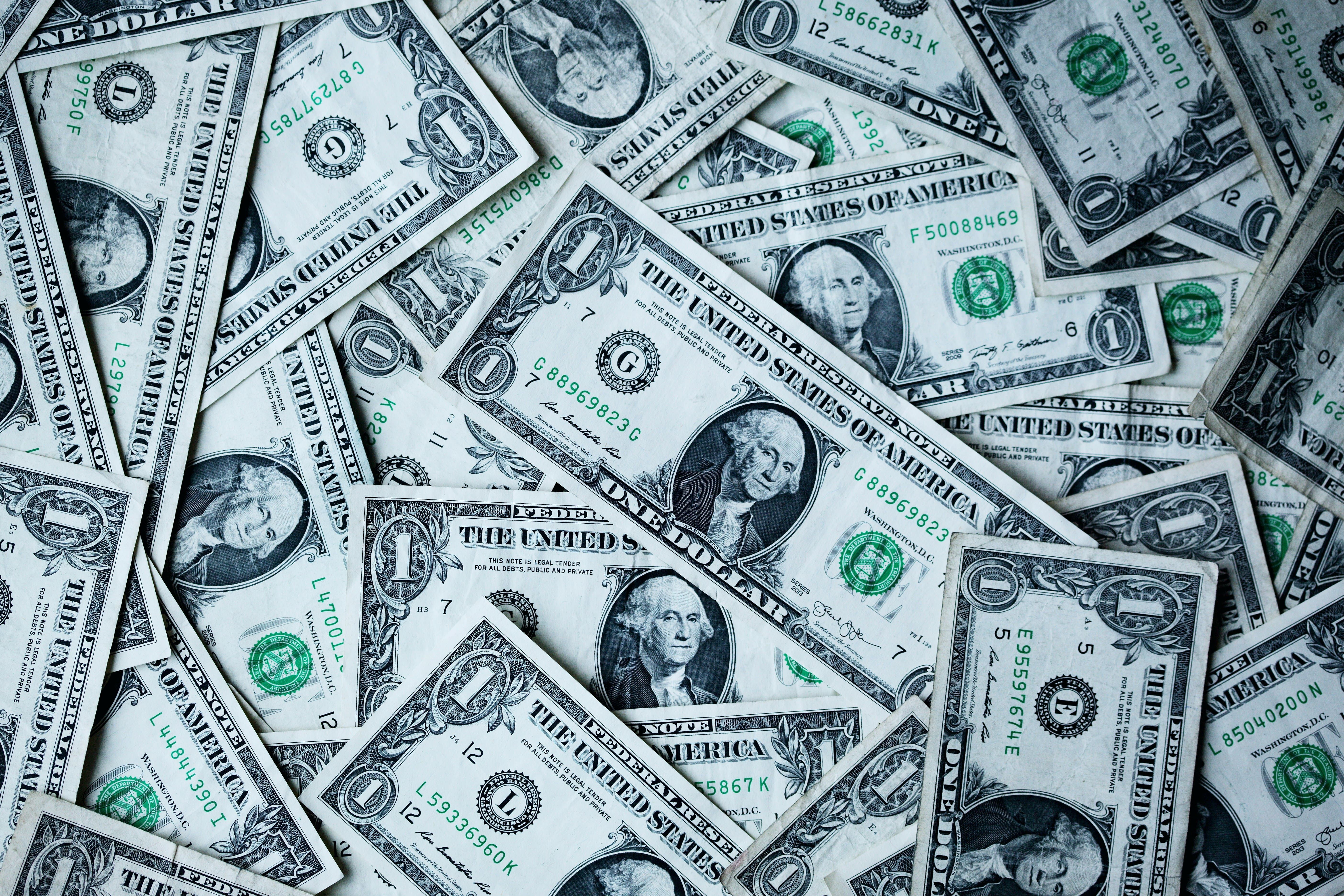How to Optimize 401(k) for Long term Wealth: A Complete Guide
Discover key strategies to enhance your 401(k) for long-term wealth, including leveraging pre-tax contributions, employer matches, and diversifying with alternative investments for a secure retirement.
Abhinil Kumar
Author

What is 401(k) retirement plan
A 401(k) retirement plan is a type of employer-sponsored savings account that allows employees to save and invest for their retirement. The primary purpose of a 401(k) is to provide individuals with a tax-advantaged way to save for their future retirement needs.
One of the key benefits of a 401(k) is the ability to make pre-tax contributions, which means that the money you contribute to your retirement account is deducted from your taxable income. This can result in immediate tax savings and allows your contributions to grow tax-deferred until you withdraw the funds in retirement.
In terms of contribution options, many employers offer a matching contribution, where they will match a portion of your contributions to your 401(k) account. This essentially provides “free money” that can help boost your retirement savings. It’s important to contribute steadily to your 401(k) to take full advantage of this matching opportunity and to ensure that you are consistently saving for your future.
To build a meaningful retirement with a 401(k), consider setting up automatic contributions from your paycheck. This ensures that you are consistently saving without needing to actively manage the process. It’s also important to determine an appropriate savings rate based on your retirement goals and financial circumstances. Lastly, choosing suitable investments within your 401(k) that align with your risk tolerance and time horizon is crucial.
Market volatility is another factor to consider when building a retirement with a 401(k). While it’s natural for the stock market to experience fluctuations, prolonged periods of market volatility can impact the value of your investments. It’s important to stay committed to your retirement savings plan and avoid making impulsive investment decisions based on short-term market movements.
Additionally, it’s essential to consider the potential impact of inflation on your 401(k) plan. Inflation erodes the purchasing power of your money over time, meaning that the same amount of money will buy less in the future. As a result, it’s important to ensure that your savings and investment strategy within your 401(k) account adequately account for inflation to maintain your standard of living throughout retirement.
Importance of optimizing 401(k) for long-term financial security
Optimizing a 401(k) for long-term financial security is of utmost importance. A 401(k) is a retirement savings plan offered by employers, allowing employees to contribute a portion of their pre-tax salary to fund their retirement. By taking steps to optimize this plan, individuals can maximize their savings and create a solid foundation for their financial future.
One key aspect of optimizing a 401(k) is maximizing contributions. By contributing the maximum allowable amount each year, individuals can take advantage of tax-deferred growth potential and increase their retirement savings significantly over time. This consistent effort ensures a strong financial cushion for the future.
Another aspect is diversifying investments within the 401(k) portfolio. Spreading investments across various asset classes, such as stocks, bonds, and mutual funds, can protect individuals from significant losses if one sector underperforms. A diversified portfolio has the potential for higher returns while mitigating risk.
Regularly reviewing allocations is also crucial. As individuals approach retirement, it’s important to reassess risk tolerance and adjust investments accordingly. This ensures that the portfolio aligns with the individual’s changing financial goals as they near retirement age.
Furthermore, adjusting contributions is essential for optimizing a 401(k). Increasing contributions with salary raises or bonuses allows individuals to take advantage of potential employer matches and compound interest over time. By consistently increasing contributions, individuals can supercharge the growth of their retirement savings.
Lastly, considering employer matches is vital. Many employers offer to match a portion of an employee’s contributions, effectively providing free money towards retirement savings. Taking full advantage of this benefit can significantly boost overall savings.
Understanding Your Current 401(k) Plan
Many employees participate in a 401(k) plan as a means to save for retirement. However, it is important to have a thorough understanding of this investment vehicle in order to maximize its potential benefits. This article will provide an introduction to understanding your current 401(k) plan. By comprehending the fundamentals of your plan, such as contribution limits, employer matching, investment options, and fees, you can make informed decisions to effectively manage and grow your retirement savings. Understanding the specifics of your 401(k) plan is essential in order to take full advantage of the tax advantages it offers and establish a solid foundation for a financially secure retirement.
Reviewing Your Investment Options
When it comes to planning for retirement, it’s important to review your investment options thoroughly. One key aspect to consider is the investment options available in your employer’s plan. It’s essential to understand these options and choose the ones that best align with your financial goals.
Your employer’s plan likely offers a range of investment options, including stock funds and bond funds. Stock funds, also known as equity funds, invest in individual stocks or a collection of stocks, providing the potential for higher returns. However, they also come with higher risks due to market fluctuations.
On the other hand, bond funds invest in fixed-income securities such as government or corporate bonds. These funds are generally considered safer investments as they offer a fixed rate of return, making them more suitable for conservative investors looking for stability.
When describing the investment options available in your employer’s plan, it’s important to provide a comprehensive overview of each category. Include information about the different funds under each category, their historical performance, and any associated fees or expenses. This will help you make informed choices and build a diversified portfolio that suits your risk tolerance and time horizon.
Analyzing the different investment choices available in your plan
When it comes to investing, having a variety of options is essential for maximizing returns and diversifying risk. In our plan, there are several investment choices available, including traditional and Roth IRAs, as well as the option to allocate funds to foreign stocks and short-term bonds.
A traditional IRA is a tax-advantaged retirement account where individuals can contribute pre-tax dollars, which grow tax-deferred until withdrawal during retirement. Contributions are tax-deductible, making it an attractive choice for individuals looking to lower their taxable income in the present.
On the other hand, a Roth IRA allows individuals to contribute after-tax dollars, and qualified withdrawals are tax-free. This option is ideal for those who anticipate being in a higher tax bracket during retirement, as it allows for tax-free growth and distributions.
Investing in foreign stocks offers the opportunity to diversify your portfolio beyond domestic equities. With globalization increasing, foreign stocks can provide exposure to different economies, industries, and currencies. It’s important to note that investing in foreign stocks carries additional risks, such as currency fluctuations and political instability.
Short-term bonds are another option for investors seeking stability and capital preservation. These bonds have a maturity of one to three years, making them less sensitive to interest rate changes. They offer regular interest payments and return the principal amount at maturity.
Understanding the tax implications of each investment option is crucial. Contributions to a traditional IRA are tax-deductible, but withdrawals during retirement are subject to income tax. In contrast, Roth IRA contributions are not tax-deductible, but qualified withdrawals are tax-free.
In addition to these investment choices, IRAs typically offer a broader assortment of investments, including stocks, bonds, mutual funds, and exchange-traded funds (ETFs). This allows individuals to tailor their investment strategy to their goals, risk tolerance, and time horizon.
Evaluating the performance and expense ratios of each option
In order to make informed investment decisions, it is crucial to evaluate the performance and expense ratios of different options. By analyzing these key factors, individuals can gauge the potential returns and costs associated with each investment. Performance ratios provide insights into the historical performance of the investment option, helping investors assess its profitability and volatility. On the other hand, expense ratios reflect the costs incurred by investors to hold a particular investment, including management fees and operating expenses. Considering both performance and expense ratios enables investors to compare different options and choose the most suitable investment strategy for their financial goals.
Assessing Your Asset Allocations
To determine the ideal asset allocations for your investment portfolio, it is crucial to consider several key factors. These factors include risk tolerance, age, income, financial goals, and emotional ability to handle potential losses. By taking these aspects into account, you can make informed decisions about diversifying your investments and optimizing your portfolio for long-term success.
Risk tolerance is perhaps one of the most critical elements to consider when assessing asset allocations. Every individual has a unique risk tolerance level, which refers to their ability to endure fluctuations in the value of their investments. By understanding your risk tolerance, you can determine the appropriate balance between higher-risk investments that offer potentially high returns and lower-risk investments that provide stability.
Age also plays an essential role in asset allocation assessment. Generally, younger individuals may have a higher risk tolerance because they have more time to recover from any potential losses. As individuals get closer to retirement age, however, a more conservative asset allocation may be necessary to preserve wealth and provide a stable income stream.
Income and financial goals are also crucial factors to consider. Higher-income individuals may have more resources to allocate towards riskier assets. Furthermore, individuals with specific financial goals, such as saving for a college fund or purchasing a home, may need to adjust their asset allocations accordingly to ensure their investments align with their timeline and objectives.
Lastly, emotional ability is often overlooked but crucial in assessing asset allocations. Some individuals may be more emotionally equipped to handle market volatility and potential losses, while others may be more risk-averse. Understanding your emotional ability to manage investments allows you to strike a balance between capitalizing on opportunities and safeguarding your financial well-being.

How to Improve 401(k) for Long term Wealth
Understanding the importance of diversification in your retirement portfolio
Diversification is a critical strategy to consider when building a retirement portfolio, as it helps protect against stock market crashes and maximize returns. By spreading investments across various asset classes, diversification reduces the risk of relying on a single investment’s performance.
During stock market crashes, certain sectors or individual stocks may experience significant declines. However, by having a diversified portfolio that includes a mix of stocks, bonds, and cash, the impact of any single investment’s poor performance is reduced. While some investments may decline, others may be more stable or even increase in value. This way, losses in one area can potentially be diminished by gains in another.
Moreover, diversification allows retirement portfolios to capitalize on different market opportunities. Stocks generally have higher returns but also higher risks, while bonds provide stability and income. Cash offers a buffer against emergency expenses. By combining these asset classes through mutual funds or ETFs, investors can achieve a balance between growth and stability.
Mutual funds and ETFs are excellent investment vehicles for diversification purposes. These funds pool money from multiple investors, which is then managed by professional fund managers who select a diversified mix of investments. Therefore, investors gain access to a range of stocks, bonds, and other assets that they may not be able to afford or manage individually.
Balancing risk and return through strategic asset allocation
Balancing risk and return through strategic asset allocation is a crucial aspect of investment management. The concept entails allocating investments across different asset classes in order to achieve a favourable balance between potential risks and returns.
Investors can achieve this balance by diversifying their portfolios. Diversification involves spreading investments across different asset classes, such as stocks, bonds, real estate, and commodities. This approach helps reduce the overall risk of the portfolio by ensuring that losses in one asset class may be offset by gains in another. It also allows investors to participate in the potential returns of different assets.
When determining the appropriate asset allocation, several key factors must be considered. Risk tolerance is a critical consideration as it reflects an individual’s willingness and ability to endure market fluctuations and potential investment losses. Investment goals, including both short-term and long-term objectives, should also be taken into account. Additionally, the timeline for investment is crucial, as different asset classes have varying levels of volatility and liquidity. Finally, the “sleep factor,” or an investor’s comfort level with the potential ups and downs of the market, should be considered.
Setting Financial Goals and Time Horizons
Setting financial goals is an essential aspect of personal financial planning. By determining what we want to achieve financially, we can create a roadmap to guide our actions and decisions. However, it is not enough to simply set a goal; we must also consider the time horizon for achieving it. Time horizons are important because they help us determine how long we have to save, invest, and take certain risks to reach our goals. Short-term goals typically have a time horizon of less than one year, such as saving for a vacation or a home appliance. Medium-term goals span one to five years and may include saving for a down payment on a house or buying a new car. Long-term goals, on the other hand, have a time horizon of more than five years and often involve retirement planning or saving for a child’s education. By understanding the relationship between financial goals and their corresponding time horizons, we can develop a comprehensive financial plan that aligns our resources and actions effectively.
Defining Your Retirement Goals
Defining your retirement goals is a crucial step in preparing for your future. It involves considering various factors such as your age and savings targets to ensure a comfortable and secure retirement.
, such as your age and savings targets,Age plays a significant role in setting retirement goals as it determines the time horizon you have to save and invest. The earlier you start saving, the more time your money has to grow. It is essential to consider your age when setting retirement goals to determine the amount of time and effort required to achieve them.
Savings targets are another vital aspect of defining retirement goals. These targets are influenced by factors such as your desired lifestyle, anticipated expenses, and expected retirement age. By setting specific savings targets, you can work towards building a retirement nest egg that will sustain you during your golden years.
To guide individuals in setting realistic retirement savings goals, Fidelity provides general guidelines based on age. According to Fidelity, by age 30, it is recommended to have the equivalent of your annual salary saved. By age 40, the goal is to have three times your annual salary saved, and by age 50, six times your annual salary. Fidelity suggests that by retirement age, individuals should aim to have ten times their annual salary saved.
The U.S. Bureau of Labor Statistics’ Consumer Expenditure Survey also offers insight into retirement savings goals. It suggests that a reasonable target is to replace about 80% of pre-retirement income during retirement. This guideline ensures that individuals can maintain their standard of living and cover expenses comfortably.
A Bankrate survey highlights the regrets any Americans have about not saving enough for retirement. The survey found that 22% of respondents said their biggest financial regret was not starting to save for retirement early enough. Additionally, the survey revealed gender disparities in retirement savings, with women having lower retirement savings balances compared to men.
In conclusion, defining your retirement goals is essential for effective retirement planning. Consider factors such as your age and savings targets to ensure a comfortable and financially secure retirement. Follow guidelines such as those provided by Fidelity and the U.S. Bureau of Labor Statistics to set realistic savings goals. Lastly, be aware of the potential regrets and disparities highlighted by the Bankrate survey, and take proactive steps to prioritize your retirement savings.
Determining how much money you will need in retirement
Determining how much money you will need in retirement is a crucial step in planning for your future. It requires careful consideration of various factors, including your age, desired lifestyle, and expected expenses.
The first step is to calculate your anticipated retirement income. This includes any pensions, Social Security benefits, or other retirement savings you may have. Take into account any potential changes in income during retirement, such as reduced employment or income from part-time work or rental properties.
Next, assess your potential healthcare costs. As you age, medical expenses tend to increase. Consider the cost of health insurance, prescription medications, and long-term care insurance. Health care costs can vary significantly based on your health status and any underlying medical conditions.
Accounting for inflation is also essential when estimating retirement expenses. Inflation erodes the purchasing power of money over time, so you’ll need to factor in the rising costs of goods and services as you age. Consult historical inflation rates to get a sense of how prices have changed over the years.
To ensure accurate planning, it’s crucial to consult with financial advisors or use retirement calculators. These tools can provide customized estimates based on your unique circumstances and help you evaluate different scenarios. Financial advisors can provide guidance on investment strategies and retirement savings options that align with your goals.
Estimating your retirement time horizon and expected expenses
Estimating your retirement time horizon and expected expenses is a crucial step in planning for a secure and comfortable retirement. By considering factors such as your current age, desired retirement age, and life expectancy, you can determine the number of years you need to plan for and save accordingly. Additionally, understanding your expected expenses during retirement, including housing, healthcare, and leisure activities, will help you establish a realistic financial goal and ensure a smooth transition from your working years to retirement. This process requires careful analysis and consideration, but the outcome will provide you with a clear picture of the time horizon you have to work with and guide you in making informed decisions about your retirement saving and spending strategies.
Establishing a Target Date Fund Strategy
Establishing a target-date fund strategy involves selecting a fund that aligns with an investor’s retirement goals and risk tolerance. These funds automatically adjust their asset allocation based on the investor’s target retirement date.
When choosing a target date, investors must assess their risk tolerance. Some individuals may prefer a conservative approach with higher allocations in fixed income investments, while others may be comfortable with higher allocations in stocks for potential higher returns. Additionally, the desired retirement age is crucial as it determines the number of years the investor has to accumulate wealth. A longer time horizon may warrant a greater allocation to stocks due to their potential for long-term growth.
However, target-date funds also have potential drawbacks. One of the primary concerns is higher expense ratios, which can eat into investment returns over time. Additionally, these funds lack customization as they follow a predetermined asset allocation glide path based on the target retirement date. This means investors have limited control over the specific investments within the fund. It is essential for individuals to evaluate whether the benefits of convenience and automatic allocation adjustments outweigh the potential drawbacks.
Explaining the benefits of target date funds for long-term investing
Target date funds are investment portfolios designed to simplify the investment process for individuals planning for retirement. They offer several benefits for long-term investing strategies. First and foremost, target date funds automatically adjust the asset allocation as retirement approaches. This means that as an investor gets closer to their retirement date, the portfolio becomes more conservative by reducing exposure to riskier assets such as stocks and increasing the allocation to safer assets like bonds. This shift in asset allocation helps to protect the investment and reduce the impact of market volatility as retirement nears.
Another major advantage of target date funds is that they automatically diversify the portfolio. Diversification is a key risk management strategy that helps to mitigate the impact of any single investment’s poor performance on the overall portfolio. With target date funds, investors gain exposure to a mix of different asset classes, such as stocks, bonds, and cash, which helps to spread risk and increase the probability of achieving long-term financial goals.
Moreover, target date funds simplify the investment process by offering a one-stop solution. Instead of manually selecting and rebalancing a portfolio over time, investors can rely on the expertise of professional fund managers who make the necessary adjustments on their behalf. This not only saves time and effort for investors but also ensures that the asset allocation remains appropriate for their retirement timeline.
Summary
In conclusion, understanding the intricacies of a 401(k) retirement plan, including the benefits of pre-tax contributions, employer matching, and the importance of navigating market volatility, is crucial for building a robust retirement fund. As you journey towards financial security in retirement, considering the impact of inflation and optimizing your 401(k) through strategic investment selections, including common investment options like target-date funds, is essential. Incorporating a diverse mix of assets, from real assets and cash equivalents to considering alternative investments such as real estate investment trusts (REITs), private equity, and commodities, allows for a well-rounded retirement portfolio. These alternative investments can offer unique growth potential and risk mitigation benefits outside of the traditional stock and bond markets. Additionally, establishing a clear understanding of your retirement goals, assessing your asset allocations, and embracing the benefits of target-date funds can significantly contribute to achieving your desired money in retirement. With careful planning, consistent contributions, and an eye on long-term growth, investors can navigate their way to a successful and secure retirement, ensuring they have the financial freedom to enjoy their later years.


